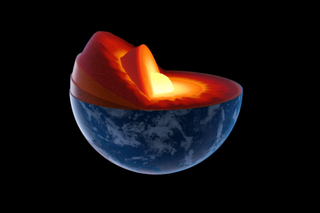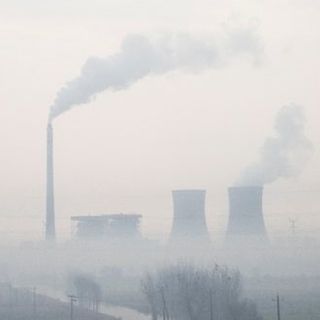
Scientists Discover Evidence of Mysterious Structure Inside the Earth’s Core
“It’s very exciting — and might mean we have to re-write the textbooks.”

Crust, mantle, outer core, inner core — these are the four layers of the Earth everyone learns in school. But perhaps not for much longer, as scientists have detected signs of a structure within the inner core, suggesting a fifth layer — an innermost inner core — in the Earth’s makeup.
“It’s very exciting — and might mean we have to re-write the textbooks,” geophysicist Joanne Stephenson, Ph.D. researcher and leader of The Australian National University team behind the research, said in a statement.
The Earth’s inner core is an extremely hot, solid ball of iron, nickel, and a handful of precious metals. It spins slightly faster than the planet itself, and might be oblong — or it might be dotted with mountains and deep ravines. Regardless, it’s unlikely to resemble the clean orbs diagrammed in science textbooks.
Within this dense metal ball, which is only slightly smaller than the moon, Stephenson and team found structural differences in the iron, the first detection of an even more-internal core. It’s one more layer of evidence confirming a fifth-layer theory that had been proposed many years ago.
“The idea of another distinct layer was proposed a couple of decades ago, but the data has been very unclear,” Stephenson said in the statement. “We got around this by using a very clever search algorithm to trawl through thousands of the models of the inner core.” Essentially, the algorithm analysed all of these models and compiled a composite.
Related on The Swaddle:
Much of the Earth’s History Is Uncertain, Say Scientists Studying Rock Formations
Examining the core directly is impossible — it is 5,000 km deep, and the farthest humans have drilled into the Earth is a mere 12 km deep, according to ScienceAlert. Studying the Earth’s core relies on models created from studying anisotropy, that is, how earthquake echoes change while traveling through the Earth. This method, obviously, provides an incomplete picture. “We are limited by the distribution of global earthquakes and receivers, especially at polar antipodes,” Stephenson’s team wrote in its paper.
But the team’s findings confirm previous earthquake echo-models that have suggested a changed structure between the outer-inner and innermost cores. Previous research has suggested the innermost core is about half the size of the outer-inner core, and its iron crystals run East to West — as opposed to the iron crystals of the outer-inner core, which run North to South. There also may be differences in behaviour between outer-inner core crystals and innermost core crystals. The current paper reveals a previously unknown chapter of Earth’s history, Stephenson said, suggesting “perhaps two separate cooling events in Earth’s history.”
The deep past may tell us more about the future. Scientists know that the Earth is continuing to cool from the inside out, freezing the molten outer core little by little. This means the inner core grows at a rate of roughly 1 mm a year. While data about the core is slowly becoming more robust, it remains quite sketchy. Still, there’s enough for scientists to be fairly sure Earth’s magnetic field — the one that protects us from much of space’s harmful radiation — is controlled by the core. Learning more about it may help us understand how to better protect a changing planet.
Liesl Goecker is The Swaddle's managing editor.
Related


Global Carbon Emissions Are Rebounding to Pre‑Covid Levels
